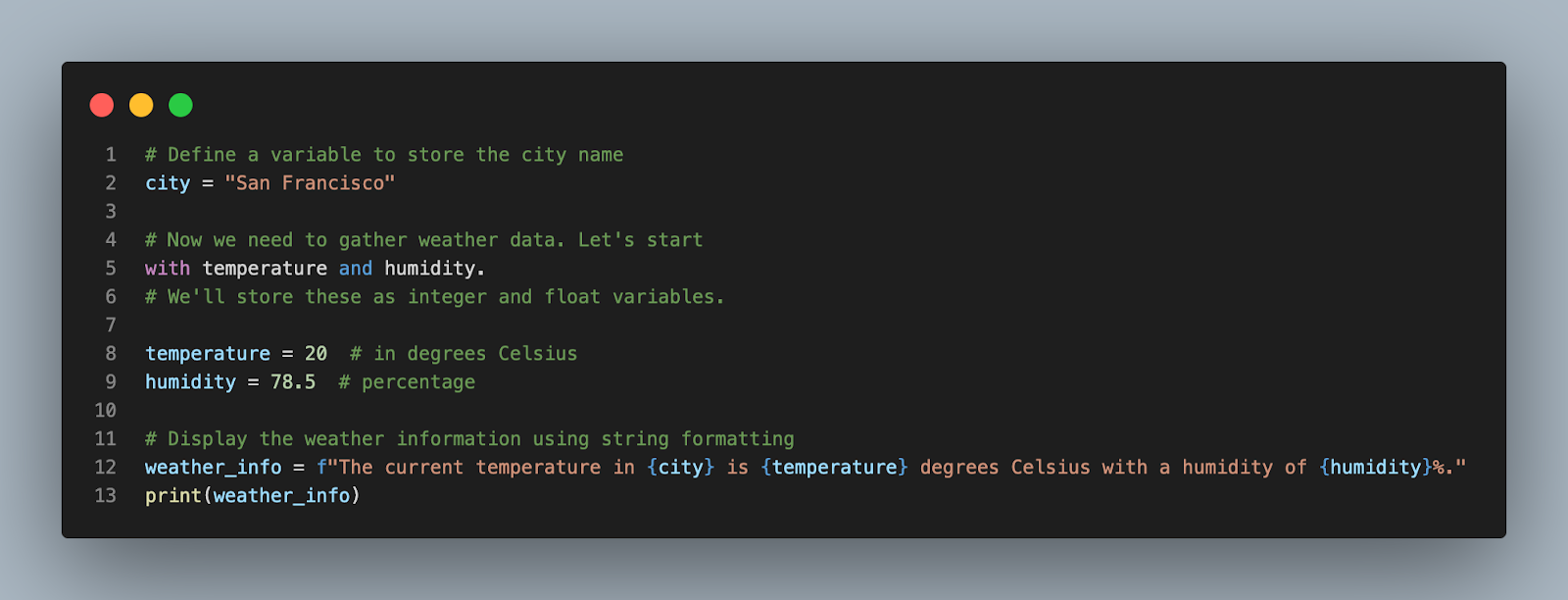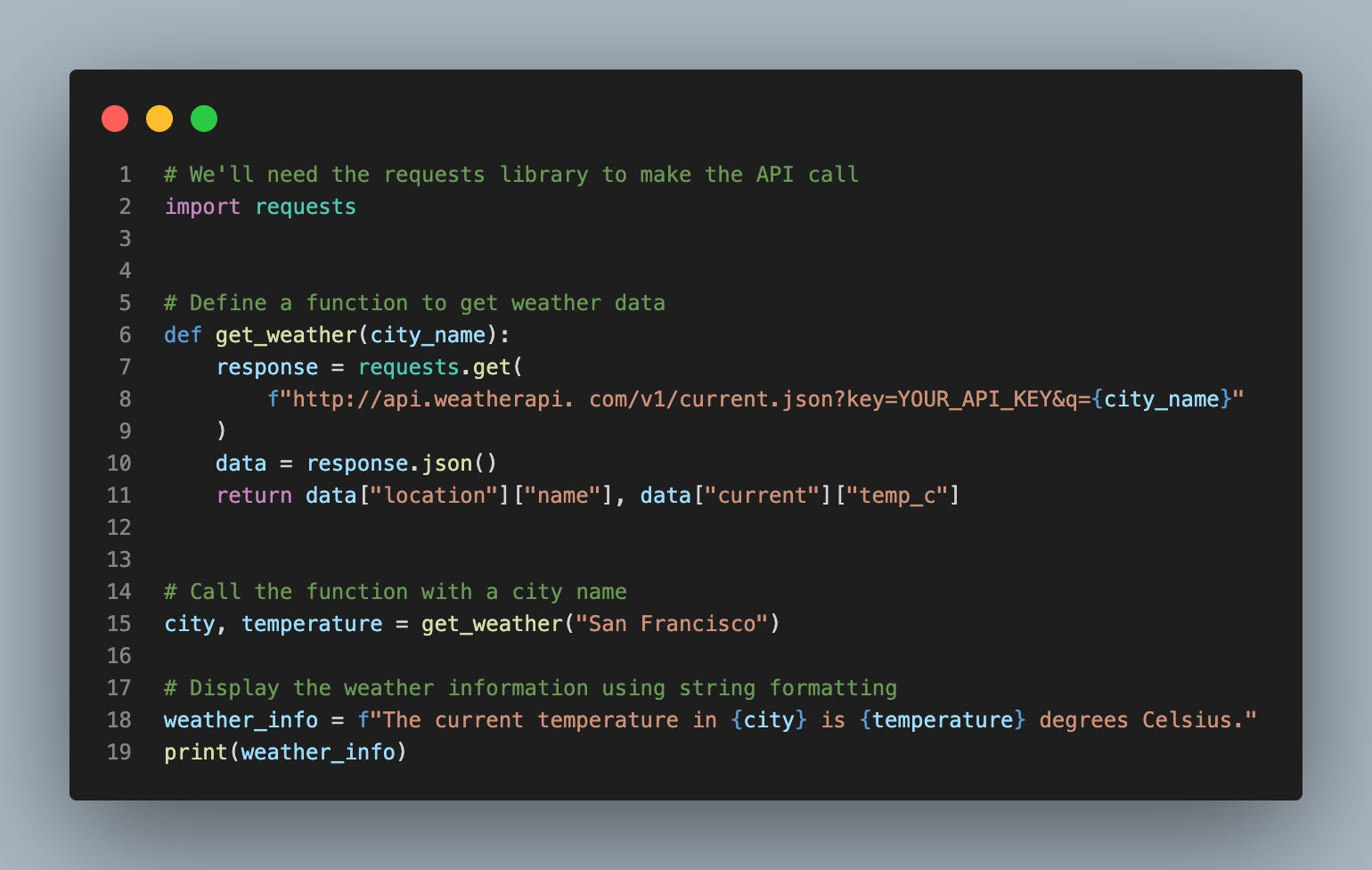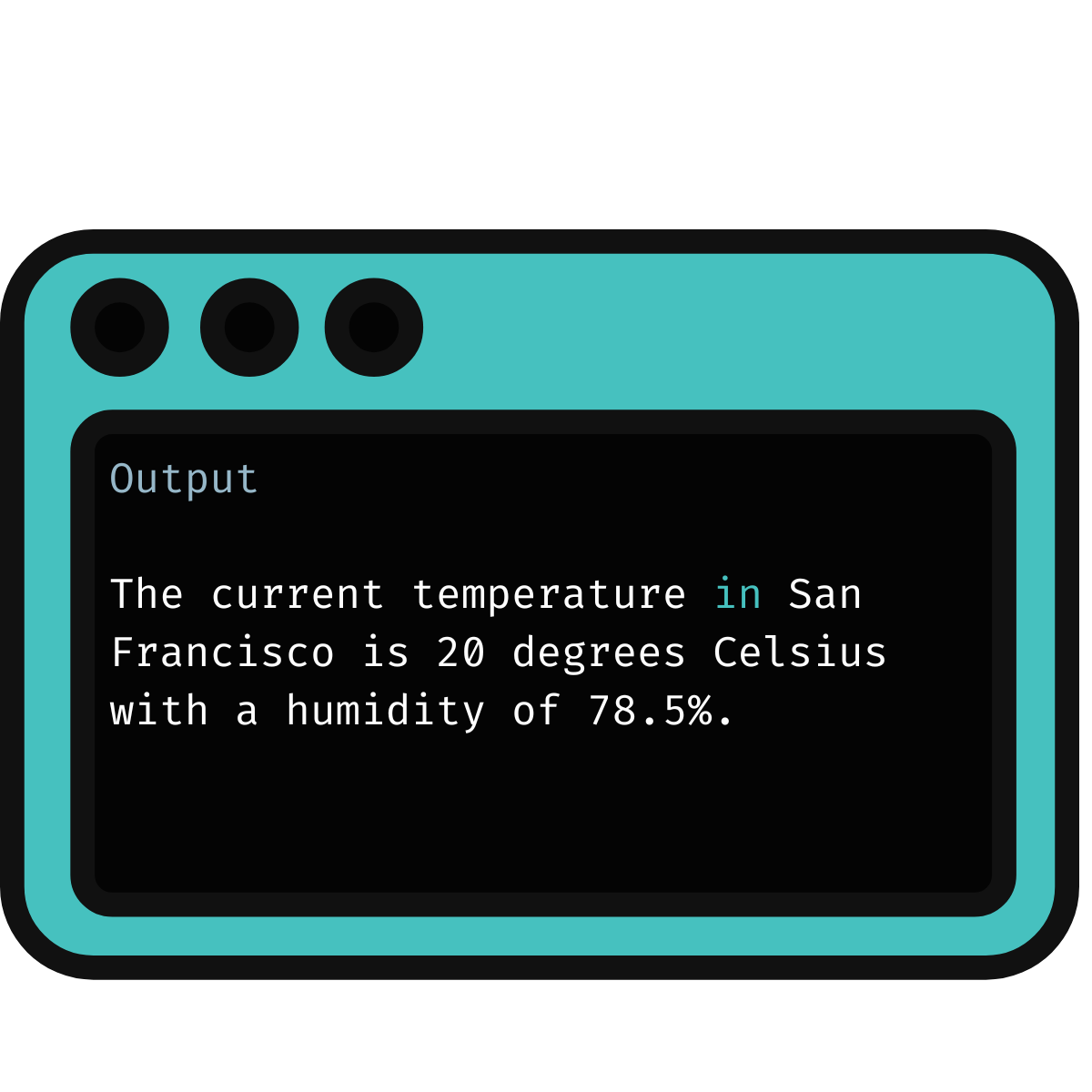A Learning Journey with ChatGPT: Python Basics Decoded
Written by Archana Vaidheeswaran


Welcome, dear learners, to the kickoff of an incredible tech journey! This blog series has been carefully designed to help you build a real-world application using various tech stacks with the help of an AI-powered coding assistant, ChatGPT. The shared goal Is too create a weather forecasting application incorporating Python, front-end technologies, data science, and cloud services throughout the series.
You should embark on this journey to::
-
Gain a deep understanding of key concepts in major tech stacks.
-
Acquire real-life coding experience through problem-solving and debugging.
-
Adopt best practices in coding and project management.
-
Stay up-to-date with the latest tech trends and industry standards.
-
Learn how to leverage ChatGPT for continuous learning, networking, and career advancement.
Before we start, remember that ChatGPT isn’t just a tool for building your application—it’s a resource that you can tap into to improve your understanding of programming and tech, especially given that it’s continuously evolving, improving, and expanding its abilities.
Setting the Stage with Python and ChatGPT
Python is a popular and powerful language, beloved for its simplicity and readability. It’s an ideal language to start with and is widely applicable, making it a perfect fit for our weather forecasting application.
ChatGPT: Your Personal Python Tutor
ChatGPT is here to make your learning process interactive and engaging. It can guide you through the maze of Python concepts, from the basics to more complex constructs.
Let’s consider our weather forecasting application. To get started, we need to understand Python’s variables and data types, as they allow us to store and handle various kinds of data. Here’s how you can interact with ChatGPT:
User: ChatGPT, I need to store a city’s name for a weather forecasting app. How do I define string variables in Python?
ChatGPT will explain the concept of Python strings, provide an example, and could even challenge you with a small interactive exercise.
After interacting with ChatGPT, the beginning of our Python script for the weather app might look something like this:
Code:
# Define a variable to store the city name
city = “San Francisco”
# Now we need to gather weather data. Let’s start
with temperature and humidity.
# We’ll store these as integer and float variables.
temperature = 20 # in degrees Celsius
humidity = 78.5 # percentage

You could ask ChatGPT about different data types in Python.
User: ChatGPT, could you explain the different data types in Python?
Building on this, you may want to display this information in a neat sentence. This is where string formatting in Python comes in handy.
User: ChatGPT, can you show me how to use string formatting in Python to display the city name, temperature, and humidity in a sentence?
ChatGPT would then explain the different methods of string formatting available in Python, such as the f-string formatting method, and how to use it.
Incorporating ChatGPT’s guidance, your script might then evolve to:
Code:
# Define a variable to store the city name
city = “San Francisco”
# Store the temperature and humidity
temperature = 20 # in degrees Celsius
humidity = 78.5 # percentage
# Display the weather information using string formatting
weather_info = f”The current temperature in {city} is {temperature} degrees Celsius with a humidity of {humidity}%.”
print(weather_info)

However, hardcoding data isn’t practical for a real-world application. We need actual, real-time weather data for our city. This is where Python libraries and APIs come into play.
Python Libraries and API Calls
Python libraries are a collection of modules that provide pre-written code to perform common tasks. One such library is requests, which we can use to send HTTP requests and interact with APIs.
An API, or Application Programming Interface, is a way for different software applications to communicate with each other. In our case, we’ll use a Weather API that allows us to fetch real-time weather data.
User: ChatGPT, how can I use the requests library in Python to fetch data from a weather API?
ChatGPT would then explain how to install and use the requests library to make API calls, handle responses, and extract data from the response.
Code:
# We’ll need the requests library to make the API call
import requests
# Define a function to get weather data
def get_weather(city_name):
response = requests.get(f’http://api.weatherapi. com/v1/current.json?key=YOUR_API_KEY&q={city_name}’)
data = response.json()
return data[‘location’][‘name’], data[‘current’][‘temp_c’]
# Call the function with a city name
city, temperature = get_weather(“San Francisco”)
# Display the weather information using string formatting
weather_info = f”The current temperature in {city} is {temperature} degrees Celsius.”
print(weather_info)

This is a simplified version and does not handle errors that might occur when making the API call, but it’s a great start and demonstrates how you can collaborate with ChatGPT to learn Python and build your weather forecasting app simultaneously. As we progress through the series, we’ll continue to expand on this script, implementing more complex logic and functionality, all with the help of ChatGPT.
Tackling Python Challenges with ChatGPT

Coding isn’t always smooth, but every roadblock is an opportunity to learn. When Python throws an error your way, don’t worry – ChatGPT is there to help decipher it.
Let’s consider an error scenario. You’re trying to combine the city’s name and its temperature in a single string but end up with a TypeError. This is how you can approach ChatGPT:
User: Hi ChatGPT, I’m trying to concatenate a city’s name and its temperature in my Python code, but I’m getting a TypeError. Can you help me understand and fix this?
ChatGPT will explain the error, show the correct way of concatenating different data types in Python, and provide a revised code snippet to solidify your understanding.
After interacting with ChatGPT, you may end up revising the ‘weather_info’ line in your script to something like this:
Code:
# Correct way to combine city name, temperature,
and humidity
weather_info = f”The current temperature in {city}
is {str(temperature)} degrees Celsius with
a humidity of {str(humidity)}%.”
print(weather_info) # Outputs: The current
the temperature in San Francisco is 20 degrees
Celsius with a humidity
of 78.5%.

Improving Your Python Skills with ChatGPT
Learning Python is more than just understanding the syntax or clearing errors; it’s about writing clean, efficient code. It’s about adopting a ‘Pythonic’ way of coding, a philosophy emphasizing readability and simplicity. Here’s how ChatGPT can help:
User: ChatGPT, can you share some best practices for coding in Python?
ChatGPT can provide you with tips and guidelines to write better Python code. These might involve using appropriate data structures, control flow constructs, adhering to the PEP 8 style guide, and much more.
Incorporating these tips, your Python script will function correctly and be clean, efficient, and maintainable.
Visualizing Our Progress
At this stage in our journey, our weather forecasting app is in its infancy. Our weather forecasting app has moved from hard-coded data to fetching real-time weather data for a specific city. Here’s what our complete script looks like at the end of this blog:
Code:
import requests
def get_weather(city_name):
response = requests.get(f’http://api.weatherapi.com/v 1/current.json?key=YOUR_API_KEY&q={city_name}’)
data = response.json()
return data[‘location’][‘name’], data[‘current’][‘temp_c’]
city, temperature = get_weather(“San Francisco”)
weather_info = f”The current temperature in {city} is {temperature} degreees Celsius.”
print(weather_info)

When run, it produces the following output:
Output:
The current temperature in San Francisco is 20 degrees Celsius with a humidity of 78.5%.

However, it’s essential to acknowledge what our app is lacking at this point:
-
Data Science Elements: Our weather app would be more useful if it could make simple forecasts based on historical weather data. In a later blog, we’ll see how we can use data science techniques for this.
-
Front-End: Our app doesn’t have a user interface yet. It’s a command-line Python script. We’ll learn how to build an interactive front end for our app using HTML, CSS, and JavaScript.
-
Deployment: Finally, our app is running on our local machine. In the future, we’ll want to deploy it to a cloud platform so anyone can access it from anywhere.
Code Chronicles
If you’re a code warrior eager to dive deeper into the realms of Python and APIs, head over to our repository!
You can find a script at /backend/app.py. It showcases how to use Python to fetch real-time weather data.
Got stuck in the Python script? I’m here to guide you on your quest. Reach out to me.
Looking Ahead
In the next blog in this series, we’ll learn about front-end technologies and see how ChatGPT can help us create an attractive, user-friendly interface for our weather forecasting app. We’ll also get our first taste of JavaScript, an essential language for interactive web development.
Remember, Rome wasn’t built in a day, and neither is a good app. Step by step, we’ll add new functionalities and improve our weather forecasting app while learning and having fun with Python and ChatGPT.
Stay tuned for the next part of this exciting journey! See you in the next blog!
Full Series
Series 1: A Learning Journey with ChatGPT: Python Basics Decoded
Series 2: JavaScript and HTML/CSS Unraveled: ChatGPT as Your Front-End Companion
Series 3: The Data Science Journey with ChatGPT: The Perfect Pair for Beginners
Series 4: Reaching for the Clouds: Mastering Cloud Computing with ChatGPT